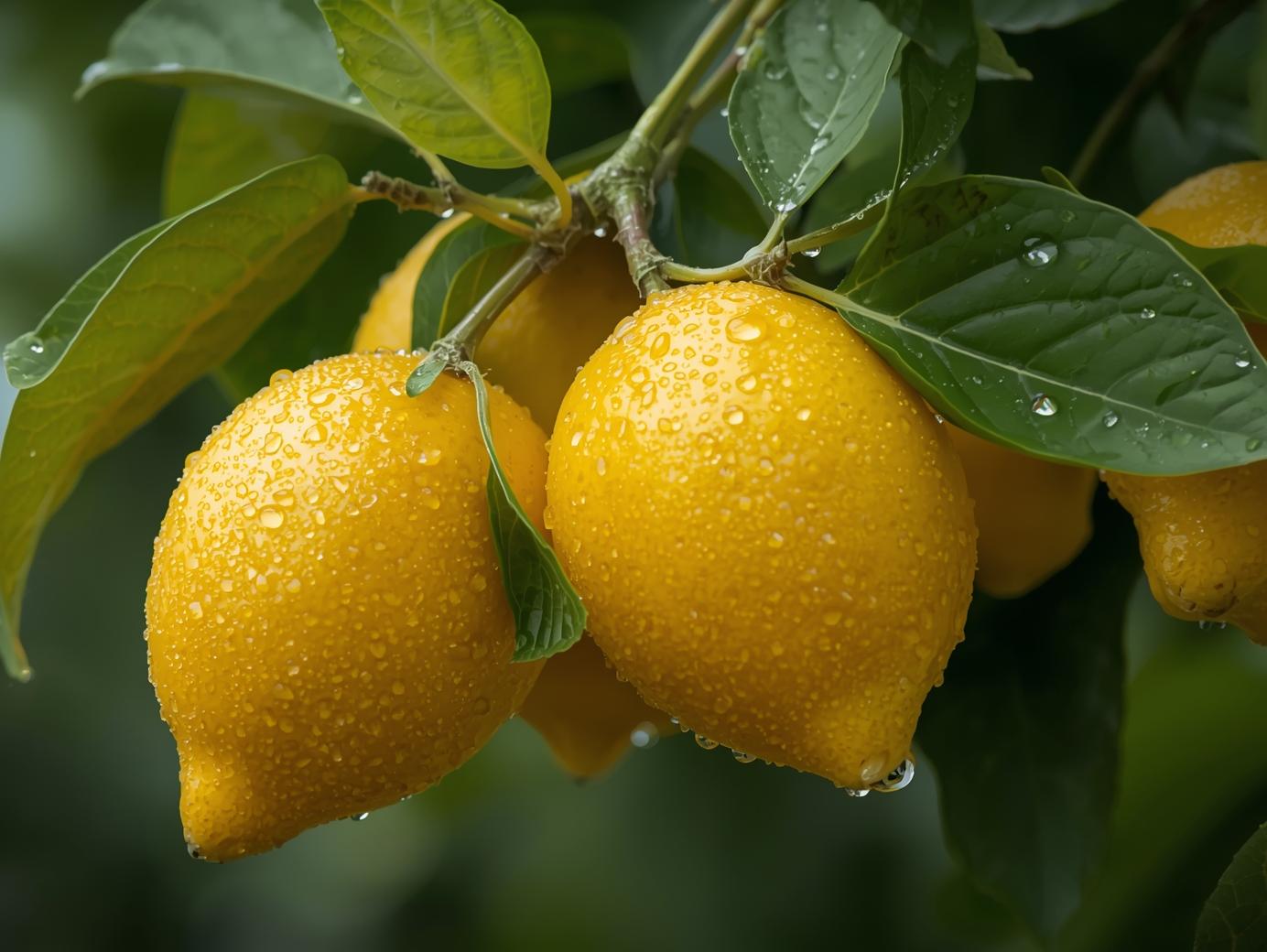Lemon trees are a wonderful addition to home courtyards, offering fragrant blossoms and bright, tangy fruit that can enhance any kitchen. Whether you live in warmer states like California and Florida or want to grow lemons in containers that can be moved indoors during colder months, understanding the specific requirements of lemon trees is key to a thriving garden. This guide walks you through essential steps to successfully grow lemon plants in your courtyard.
Soil Selection
Choosing the right soil is fundamental for growing healthy lemon trees. Lemons prefer well-draining, slightly acidic to neutral soil with a pH between 5.5 and 7.0. This type of soil ensures that water drains efficiently while still retaining enough moisture and nutrients for the roots. Heavy clay soils or poorly draining soils can cause root rot, which is a common problem with citrus trees, so amending soil with organic matter or sand may be necessary.
To optimize soil conditions, consider mixing compost or well-aged manure into the planting area to boost fertility and improve soil texture. Testing the soil’s pH before planting will guide any amendments required to create the ideal environment for lemon trees. Proper soil preparation sets a solid foundation for vigorous root development and sustained growth.
Site Preparation
Preparing your site well is crucial to support healthy lemon trees. Select a location in your courtyard that receives full sunlight for at least six to eight hours daily, as lemon trees require abundant light to produce sweet, flavorful fruit. The site should also be sheltered from strong winds, which can damage the delicate branches and flowers.
Before planting, clear the area of any weeds and debris that could compete with your lemon tree for nutrients and water. Loosen the soil deeply to promote root penetration and mix in organic matter to enhance moisture retention and soil fertility. If your courtyard is small or the soil conditions are less than ideal, planting lemons in raised beds or large containers is a practical alternative.
Planting
The timing and technique of planting lemon trees significantly impact their successful establishment. Early spring is the best time to plant lemon trees outdoors, after the risk of frost has passed. When transplanting from a container, gently loosen the roots if they are circling the pot to encourage outward growth. Place the tree in a hole twice as wide as the root ball but no deeper to avoid burying the graft union.
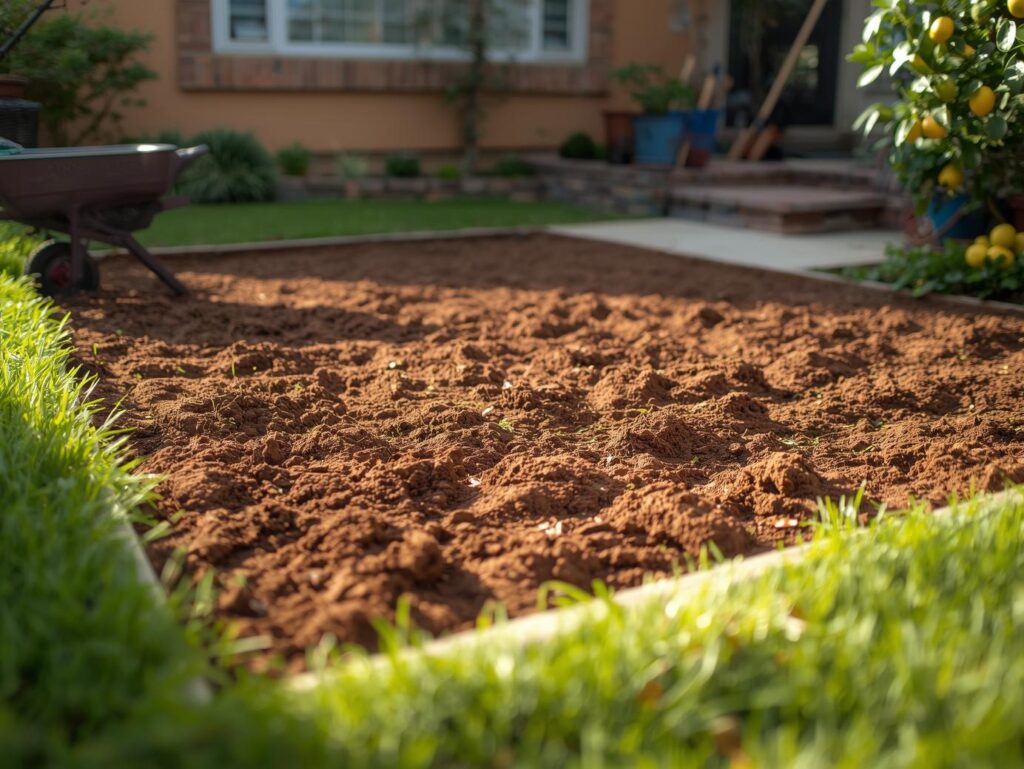
Backfill the hole with soil, pressing gently to remove air pockets, then water thoroughly to settle the soil around the roots. Applying a layer of mulch around the base helps retain moisture and suppress weeds. If planting in containers, ensure the pot has good drainage holes and use a high-quality citrus potting mix to provide nutrients and proper aeration.
Watering
Proper watering is essential for lemon trees, especially during their establishment and fruiting phases. Newly planted lemon trees require consistent moisture to develop strong root systems, so deep watering once or twice a week is usually recommended depending on weather conditions. It is important to avoid overwatering, as soggy soil can suffocate roots and lead to diseases such as root rot.
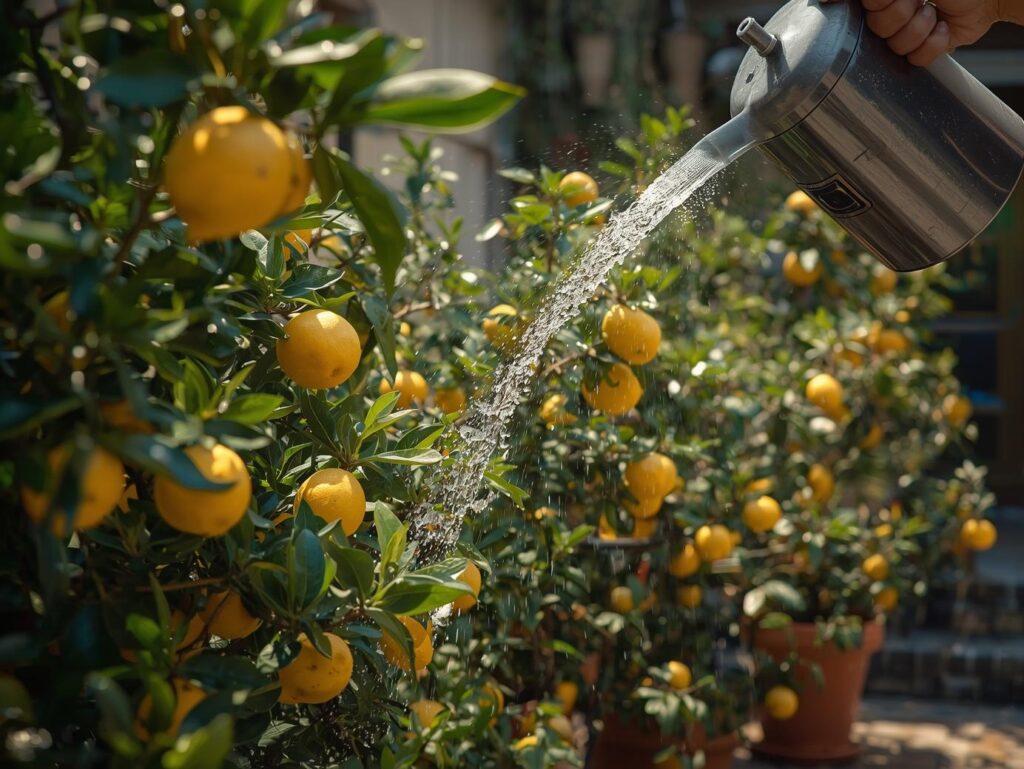
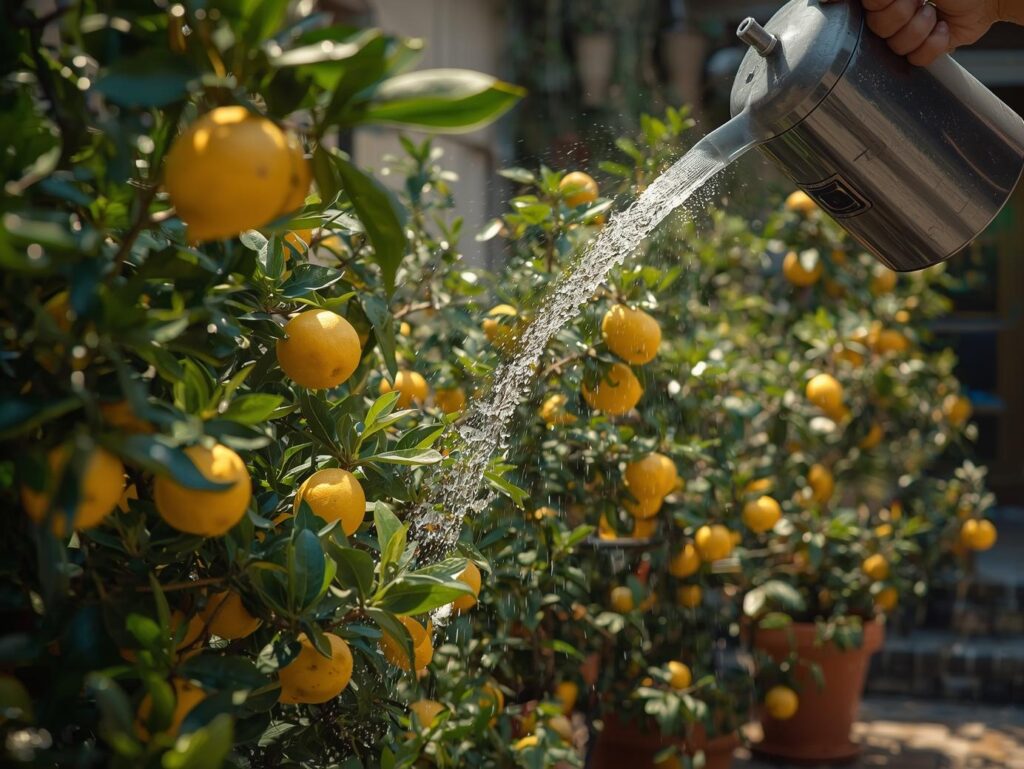
As the tree matures, reduce watering frequency but maintain deep watering sessions during dry periods, especially in summer when fruits are developing. Using drip irrigation or soaker hoses can provide water directly to the root zone, reducing evaporation and keeping the foliage dry, which helps prevent fungal infections. Always monitor soil moisture and adjust watering according to rainfall and temperature.
Fertilizing
Lemon trees are heavy feeders that benefit from regular fertilization to support lush growth and abundant fruiting. Use a balanced citrus fertilizer formulated with nitrogen, phosphorus, and potassium, applied according to the tree’s size and age. Generally, young trees need less fertilizer, while mature trees benefit from feeding three to four times annually, particularly during the growing season.
In addition to macronutrients, lemons require micronutrients such as magnesium, iron, and zinc to prevent deficiencies that can affect leaf color and fruit quality. Organic options like compost or fish emulsion can supplement synthetic fertilizers and improve soil health. Always follow recommended application rates to avoid nutrient imbalances that can harm the tree.
Pruning and Training
Pruning lemon trees helps maintain a healthy structure, enhances air circulation, and improves sunlight penetration, which is critical for fruit development. The best time to prune is in late winter or early spring before new growth begins. Remove dead, diseased, or crossing branches to reduce the risk of pests and diseases and to keep the tree shape balanced.
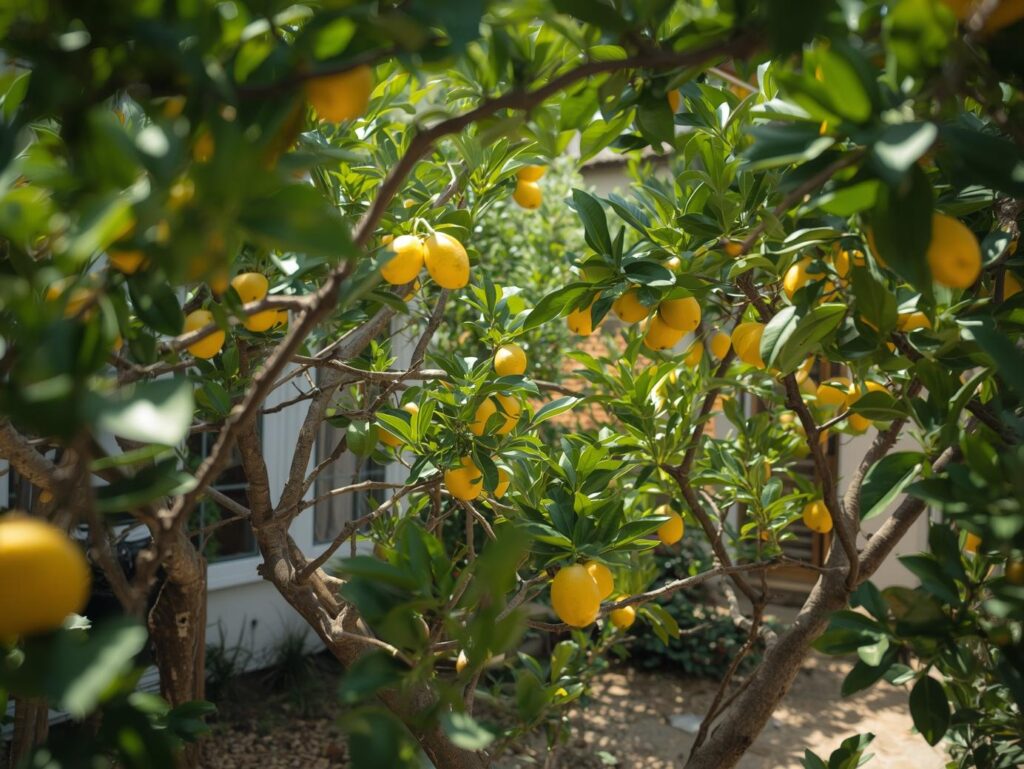
Training young lemon trees focuses on developing a strong central leader or open canopy, depending on the variety. Regularly thinning crowded branches helps prevent overcrowding and promotes better airflow. Pruning also controls tree size, which is especially important in courtyards or container-grown trees, making maintenance and harvesting easier.
Pest and Disease Control
Lemon trees are prone to pests like aphids, scale insects, and citrus leaf miners, which can damage leaves and reduce vigor. Early detection is crucial; regular inspection of foliage and fruit helps catch infestations before they become severe. Natural predators such as ladybugs or horticultural oils can be effective, and if needed, targeted insecticides safe for citrus should be used following instructions carefully.
Diseases such as citrus canker, root rot, and greening disease present significant challenges for lemon growers. Good cultural practices, including proper pruning, avoiding overwatering, and maintaining garden cleanliness, can minimize disease outbreaks. Choosing disease-resistant varieties and maintaining tree health are key strategies for long-term success in your courtyard garden.
Fruiting and Harvest
Lemon trees usually begin to bear fruit within one to three years, depending on the variety and growing conditions. Fruits mature gradually, turning bright yellow when ripe. For the best flavor, lemons should be harvested once they reach full size and color but before they become overripe or soft. Picking lemons regularly encourages continuous fruit production.
Harvesting lemons requires gentle handling to avoid bruising. Use pruning shears or twist the fruit carefully from the stem. In courtyard gardens, timely harvests ensure that the tree’s energy is redirected toward new growth and fruit development, allowing you to enjoy fresh lemons for months throughout the year.
